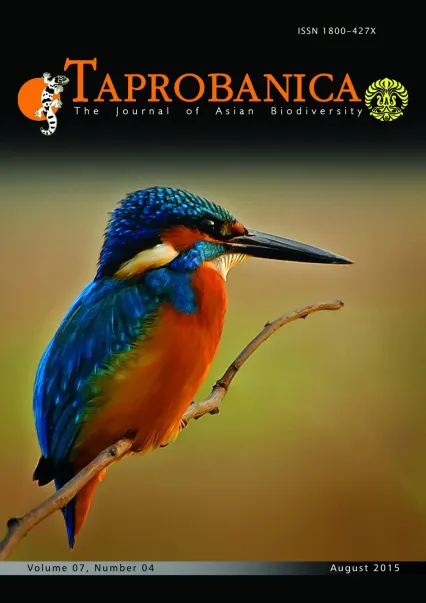

v7i4.204
Volume 7 | Number 4 | November 2015
Short Note
ISSN: 1800-427X (print)
eISSN: 1800-427X (online)
DOI:10.47605/tapro.v7i4.204
Submitted date: 21 March 2015
Accepted date: 5 June 2015
Published date: 15 August 2015
Pp. 263–265.
A two-tailed Indian giant leaf-toed gecko (Hemidactylus giganteus)
G.C. Kumar* & C. Srinivasulu
*Corresponding author. E-mail: g.chethankumar@gmail.com
Tail autotomy is a common strategy for evading predators in lizards. It has been observed in 13 out of 20 lizard families. The ability to shed its tail increases a lizards chance of escape as the attention of the predator is drawn to the writhing or wriggling tail, while the lizard makes its escape. However, the loss of the tail can lead to a range of impacts on the lizard including a decrease in the lizard’s social status and increased vulnerability to predators in future.
Section Editor: John Rudge
eISSN: 1800-427X (online)
DOI:10.47605/tapro.v7i4.204
Submitted date: 21 March 2015
Accepted date: 5 June 2015
Published date: 15 August 2015
Pp. 263–265.
A two-tailed Indian giant leaf-toed gecko (Hemidactylus giganteus)
G.C. Kumar* & C. Srinivasulu
*Corresponding author. E-mail: g.chethankumar@gmail.com
Tail autotomy is a common strategy for evading predators in lizards. It has been observed in 13 out of 20 lizard families. The ability to shed its tail increases a lizards chance of escape as the attention of the predator is drawn to the writhing or wriggling tail, while the lizard makes its escape. However, the loss of the tail can lead to a range of impacts on the lizard including a decrease in the lizard’s social status and increased vulnerability to predators in future.
Section Editor: John Rudge
- List of Articles & Contents





